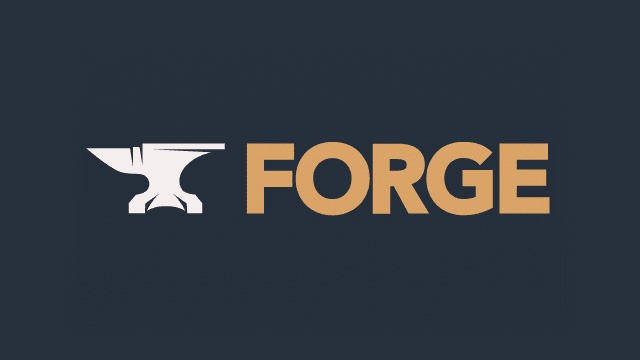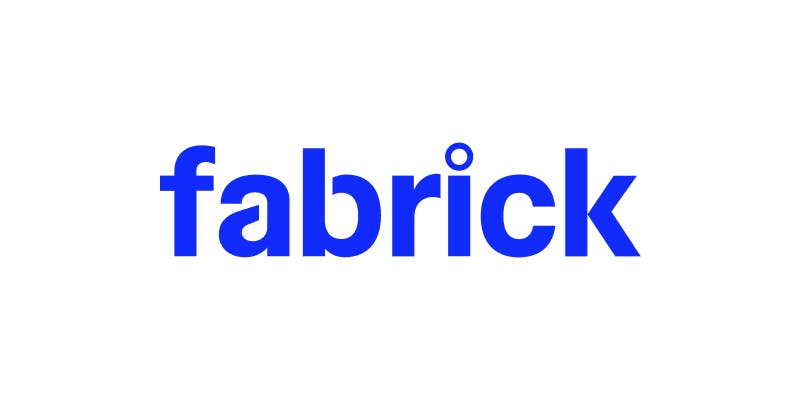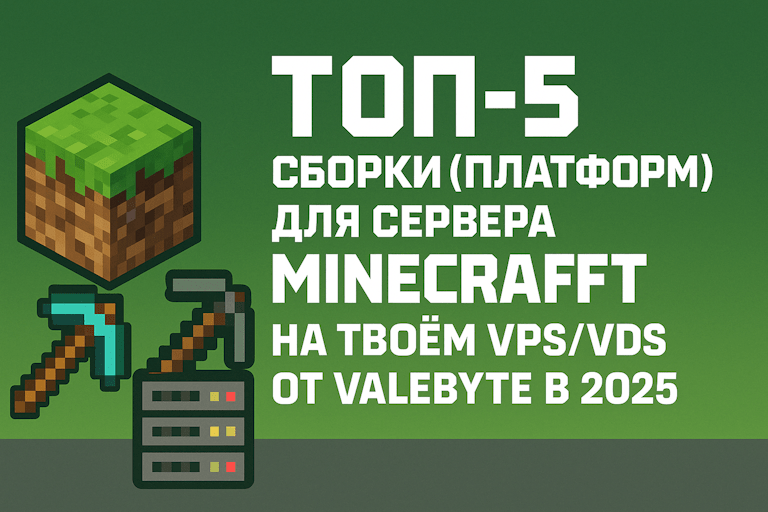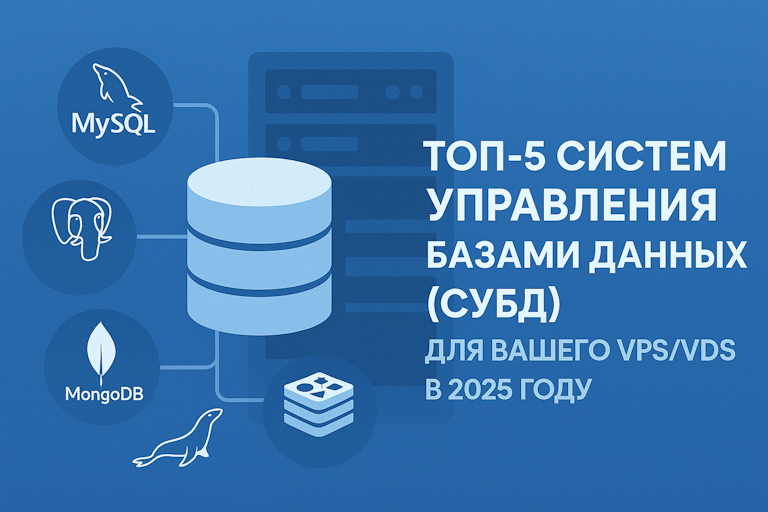Hey friend! Decided to set up your own Minecraft world to hang out with friends without the limitations and lag of standard hosting? Great idea! Renting a VPS or VDS, for example, from Valebyte is the first step towards complete freedom and control over your cubic paradise. But then the question arises: what, exactly, should you run the server on? After all, Minecraft isn’t just a game; it’s a whole universe of possibilities, and the choice of «engine» for your server drastically affects what this world will be like.
You might want pure survival, as Mojang intended. Or maybe you need cool plugins for administration, economy, land claiming, and minigames? Or perhaps you’re a fan of global mods that change the game beyond recognition? Different server platforms (or «kernels,» «builds»—they’re called many things) exist for all this. It’s easy to get confused, especially if you’re doing this for the first time. But don’t worry, I’ll help you figure it out! In this article, we’ll examine the top 5 most popular and relevant platforms for your Minecraft server in 2025. We’ll see how they differ, what they’re suitable for, and how to run them. Let’s dig deeper!
What We’ll Discuss:
- Why is Choosing a Platform So Important?
- What Criteria Are We Comparing By?
- Vanilla: Pure as Notch’s Tear
- SpigotMC: The Gold Standard for Plugins
- PaperMC: Spigot on Performance Steroids
- Forge: The Grandfather of Modding
- Fabric: Lightweight and Modern Modding
- Comparison Table: Who’s Who?
- Conclusions: Which Platform to Choose for Your Server?
Why is Choosing a Platform So Important?
Look, the server platform is the foundation of your world. It affects:
- Performance: How well the server handles the load (players, mobs, mechanisms). Some platforms are better optimized than others.
- Customization Options: Will you be able to install plugins (which change server logic without requiring anything from the client, such as /home commands, land claiming, and economy) or mods (which add new blocks, items, mechanics, and require installation on the game client)?
- Stability: How often the server will crash or lag due to errors in the platform’s code itself.
- Relevance: How quickly the platform is updated for new Minecraft versions.
By choosing the wrong platform, you might find that you can’t install the plugin you need, the server lags terribly on your powerful VPS from Valebyte, or you’re stuck on an old game version because the platform developers have stopped updating. So let’s approach the choice wisely.
“Tools are just tools. They work, or they don’t work. People are the real variable.”
Steve Jobs (Apple Founder)
In our case, the platform is the tool. Let’s choose the right one!
What Criteria Are We Comparing By?
To make our comparison fair and useful, let’s go through the key parameters:
- Performance: How fast does it run? Can it handle 20+ players without lag?
- Plugin Support: Is it possible to install Bukkit/Spigot/Paper API plugins?
- Mod Support: Is it possible to run Forge/Fabric mods?
- Version Compatibility: How quickly do updates appear for the latest Minecraft releases?
- Ease of Setup: How easy is it for a beginner to set up and run?
- Resource Requirements: How much RAM and CPU power should be allocated on the VPS/VDS?
- Community and Support: Are there any documentation, Q&A forums, and guides available?
Vanilla: Pure as Notch’s Tear
Vanilla is the official server from Mojang. No plugins, no mods, just original Minecraft as it is. Ideal for those who want the «true» survival experience with friends, without extra bells and whistles. Or if you just want to test a new game version.

Performance
Historically, Vanilla wasn’t known for super-optimization. With a large number of players or complex redstone circuits, it can start to lag even on good hardware. Mojang constantly improves performance, but unofficial platforms often do it better and faster.
Plugin/Mod Support
None. Absolutely none. This is Vanilla’s main limitation.
Version Compatibility
Perfect. The server software is released simultaneously with the new game version from Mojang.
Ease of Setup / Resource Needs
Couldn’t be simpler. Download a single .jar file from the official website and run it. No additional libraries (except Java, of course). Before the first launch, make sure you have Java installed (usually Java Runtime Environment — JRE, or Java Development Kit — JDK, version 17 or later is needed for modern Minecraft versions).
Where to download: Official Minecraft Website
How to run (example for Linux on your VPS/VDS):
# First, make sure Java is installed (for example, for Ubuntu/Debian):
sudo apt update
sudo apt install openjdk-17-jre-headless -y
# Download server.jar from the website and place it in a separate folder
# Run the server with this command (specify the required amount of RAM):
java -Xmx2G -Xms1G -jar server.jar nogui
# On the first run, it will create a file eula.txt. Open it:
nano eula.txt
# Change eula=false to eula=true, save (Ctrl+X, then Y, then Enter)
# Run the server again!Resource requirements: 1-2 GB RAM is sufficient for 2-5 players. For 10-15 players, it’s better to have 3-4 GB RAM and 2 CPU cores on your Valebyte plan.
Community and Support
The huge Minecraft game community itself. Many guides on basic server settings.
SpigotMC: The Gold Standard for Plugins
Spigot is essentially a highly optimized version of Vanilla with added support for the Bukkit API and its own Spigot API. This opens the door to a huge world of plugins. Want land claiming (WorldGuard)? An economy (EssentialsX)? A teleport system? All this and thousands of other plugins are available for Spigot. For a long time, it was the most popular platform for servers with plugins.

Performance
Significantly better than Vanilla thanks to numerous optimizations under the hood. It handles large online numbers and heavily loaded chunks better. Although in recent years PaperMC (discussed below) often surpasses Spigot in performance.
Plugin/Mod Support
✅ Yes, supports Bukkit API and Spigot API plugins.
❌ No, it does not support Forge or Fabric mods.
Version Compatibility
Updates are released fairly quickly after Minecraft releases, usually within a few days or weeks. There may be minor delays sometimes.
Ease of Setup / Resource Needs
Slightly more complex than Vanilla. Spigot cannot be simply downloaded as a ready-made .jar. It needs to be built independently using the BuildTools tool. This is due to legal issues with Mojang’s code. The process is not complicated, but it requires executing several commands.
How to build and run (example for Linux):
# Install Java JDK (if not already installed) and git:
sudo apt update
sudo apt install openjdk-17-jdk-headless git -y
# Create a folder for BuildTools and navigate to it:
mkdir ~/buildtools
cd ~/buildtools
# Download BuildTools.jar:
wget https://hub.spigotmc.org/jenkins/job/BuildTools/lastSuccessfulBuild/artifact/target/BuildTools.jar
# Run the build for the required version (for example, 1.20.4):
java -jar BuildTools.jar --rev 1.20.4
# Wait for the build to finish (it will take time!). The finished spigot-*.jar will be in the same folder.
# Move spigot-*.jar to your server folder.
# Run similarly to Vanilla, but with the Spigot filename:
java -Xmx4G -Xms2G -jar spigot-1.20.4.jar nogui
# Don't forget to accept the EULA in the eula.txt file!Resource requirements: due to optimizations, it may require slightly less RAM than Vanilla under the same load, but plugins can add their own load. Aim for 2-3 GB RAM to start and 4-6 GB+ for a server with 20-30 players and a set of plugins.
Community and Support
A huge community, the official forum SpigotMC.org, tons of guides, plugin developers. Finding help is easy.
PaperMC: Spigot on Performance Steroids
PaperMC (or simply Paper) is a fork of Spigot. That is, it’s based on Spigot’s code, but goes even further in terms of performance and stability optimizations. Paper includes all of Spigot’s optimizations, plus adds its own, fixes many bugs and exploits (sometimes even before Mojang), and provides an extended API for plugin developers.
Today, Paper is considered the best choice for most servers with plugins, especially if maximum performance and stability are important.

Performance
Outstanding. Paper includes many patches aimed at reducing CPU load, optimizing work with chunks, mobs, and much more. A server on Paper often runs noticeably smoother and can handle more players than a similar one on Spigot, on the same Valebyte VPS hardware.
Plugin/Mod Support
✅ Yes, full compatibility with plugins for Bukkit and Spigot. Plus, there’s its own Paper API with additional capabilities.
❌ No, it does not support Forge or Fabric mods.
Version Compatibility
Very fast. The Paper team often releases updates for new Minecraft versions literally within hours or days of the release.
Ease of Setup / Resource Needs
Simpler than Spigot! A ready-made .jar file can be downloaded directly from the website. No need to build anything.
Where to download: Official PaperMC Website (choose the required Minecraft version)
How to run (example for Linux):
# Install Java (if not already installed):
sudo apt update
sudo apt install openjdk-17-jre-headless -y
# Download paper-*.jar from the website to the server folder.
# Run (it is recommended to use Aikar's flags for better performance):
java -Xms4G -Xmx4G -XX:+UseG1GC -XX:+ParallelRefProcEnabled -XX:MaxGCPauseMillis=200 -XX:+UnlockExperimentalVMOptions -XX:+DisableExplicitGC -XX:+AlwaysPreTouch -XX:G1NewSizePercent=30 -XX:G1MaxNewSizePercent=40 -XX:G1HeapRegionSize=8M -XX:G1ReservePercent=20 -XX:G1HeapWastePercent=5 -XX:G1MixedGCCountTarget=4 -XX:InitiatingHeapOccupancyPercent=15 -XX:G1MixedGCLiveThresholdPercent=90 -XX:G1RSetUpdatingPauseTimePercent=5 -XX:SurvivorRatio=32 -XX:+PerfDisableSharedMem -XX:MaxTenuringThreshold=1 -Dusing.aikars.flags=https://mcflags.emc.gs -Daikars.new.flags=true -jar paper-1.20.4-XYZ.jar nogui
# (Replace paper-1.20.4-XYZ.jar with your file name and adjust -Xms/-Xmx to your VPS)
# Don't forget to accept the EULA!Resource requirements: thanks to optimizations, Paper can even be slightly more economical than Spigot under the same load. But still – allocate 2-3 GB RAM to start and increase as online growth and the number of plugins increase.
Community and Support
An active and growing community. There’s excellent documentation, a Discord server for support. Many plugin developers primarily focus on Paper.
Forge: The Grandfather of Modding
If you want to play with mods—those that add new ores, magic, technology, dimensions—then you need a modding platform. And Forge is the oldest, most famous, and still widely used platform for this. A huge number of popular mods (especially for versions up to 1.16-1.18) are written specifically for Forge.
It’s important to understand: for playing on a Forge server, players also need to install Forge and the same mods on their client.

Performance
The Forge platform itself isn’t highly optimized compared to Paper or Spigot. And mods are the main resource consumers. The more mods and the more complex they are, the greater the load on the server. Performance heavily depends on the specific modpack.
Plugin/Mod Support
❌ No, it does not directly support Bukkit/Spigot/Paper API plugins.
✅ Yes, the main platform for Forge mods. There are hybrid kernels (such as Mohist, Magma) that attempt to combine Forge and plugins, but they are often unstable and not recommended for serious projects.
Version Compatibility
Updating Forge for new Minecraft versions can take considerable time (weeks, and sometimes months), as it requires significant API rework. Many mods also lag behind with updates.
Ease of Setup / Resource Needs
Installing a Forge server is slightly different. You need to download the installer from the official website and run it with a specific flag to install the server files.
Where to download: Official Minecraft Forge Website (choose the required Minecraft version and download the Installer).
How to install and run (example for Linux):
# Install Java JDK (if not already installed):
sudo apt update
sudo apt install openjdk-17-jdk-headless -y
# Create a folder for the server and navigate to it
mkdir ~/forgeserver
cd ~/forgeserver
# Download forge-XYZ-installer.jar from the website
wget [link to the forge installer]
# Run the installer to install the server files:
java -jar forge-*.jar --installServer
# After installation, a new .jar file (for example, forge-1.18.2-....jar)
# and a libraries folder will appear. A run.sh script or user_jvm_args.txt may also appear.
# You may need to run the server through the run.sh script or edit user_jvm_args.txt to specify RAM.
# Example of a simple launch (specify the .jar file name):
java -Xmx6G -Xms4G -jar forge-1.18.2-....jar nogui
# Don't forget to accept the EULA!
# Mods (jar files) will need to be placed in the 'mods' folder, which will appear after the first launch.Resource Requirements: THE HIGHEST. Mods are very resource-intensive. For a small modpack (10-20 mods) and 5-10 players, you need at least 4-6 GB RAM. For large modpacks (100-200+ mods), you may need 8 GB, 12 GB, 16 GB RAM or more, as well as a powerful processor. A Valebyte VPS/VDS with good CPUs and sufficient RAM is simply essential here.
Community and Support
A huge community of modders and players. There is an official Forge forum, many websites with mods (CurseForge), and guides on setting up modpacks.
Fabric: Lightweight and Modern Modding
Fabric is a newer, lighter, and more modular modding platform that’s gaining huge popularity, especially in the latest Minecraft versions. It was developed with a focus on update speed and minimal impact on game performance. Many new and interesting mods are released specifically for Fabric (or simultaneously for Fabric and Forge).
As with Forge, players need to install Fabric Loader and the same mods on their client to connect to a Fabric server.

Performance
The Fabric platform itself is very lightweight. Server performance heavily depends on the installed mods, but overall Fabric modpacks are often considered less demanding than functionally similar Forge modpacks. Plus, there are excellent performance optimization mods for Fabric (Sodium, Lithium, Phosphor, and their forks) that can make the server very fast.
Plugin/Mod Support
❌ No, it doesn’t support Bukkit/Spigot/Paper API plugins.
✅ Yes, it’s the primary platform for Fabric mods. There’s a project Cardboard that allows running some Bukkit/Spigot plugins on a Fabric server, but compatibility is not guaranteed.
❗ Important: Mods for Forge and Fabric are not compatible with each other!
Version Compatibility
Very fast. The Fabric API and the loader itself are often updated for new Minecraft snapshots and releases on the same day or within a few days.
Ease of Setup / Resource Needs
Installation is similar to Forge, but often perceived as simpler. It uses the official Mojang server `.jar` and the Fabric loader.
Where to download: Official FabricMC website (server instructions)
How to install and run (example for Linux):
# Install Java (if not already installed):
sudo apt update
sudo apt install openjdk-17-jre-headless -y
# Create a server folder and navigate to it
mkdir ~/fabricserver
cd ~/fabricserver
# Download the official server.jar from Mojang (if not already downloaded)
# Download the Fabric installer from fabricmc.net
wget [link to fabric-installer.jar]
# Run the installer to generate the launch script and download libraries:
java -jar fabric-installer-*.jar server -mcversion [game_version] -downloadMinecraft
# fabric-server-launch.jar and the libraries folder will appear.
# Run the server using fabric-server-launch.jar:
java -Xmx4G -Xms2G -jar fabric-server-launch.jar nogui
# Don't forget to accept the EULA!
# Mods (jar files) need to be placed in the 'mods' folder. The Fabric API (also a mod) is required.Regarding resources: usually less demanding than Forge for similar tasks. For a small modpack (10-30 mods), 3-4 GB of RAM may be sufficient. For larger ones – 6-8 GB+. Again, it all depends on the specific mods.
Community and Support
A rapidly growing and very active community. There is a Discord server and good documentation. More and more mods are being released specifically for Fabric.
Comparison Table: Who’s Who?
Let’s gather all the key points into one convenient table so you can quickly compare the platforms:
| Platform | Pros | Cons | Website/Info |
|---|---|---|---|
| Vanilla | ✅ Purest experience ✅ Easy installation ✅ Instant updates | ❌ No plugin/mod support ❌ Not the best performance | minecraft.net |
| SpigotMC | ✅ Bukkit/Spigot plugin support ✅ Better performance than Vanilla ✅ Huge community and plugin selection | ❌ Needs to be built using BuildTools ❌ No mod support ❌ Inferior performance to Paper | spigotmc.org |
| PaperMC | ✅ Excellent performance and stability ✅ Bukkit/Spigot/Paper plugin support ✅ Easy installation (ready-made jar) ✅ Fast updates | ❌ No mod support ❌ Some fine-tuning may differ from Spigot | papermc.io |
| Forge | ✅ Huge mod base (especially older ones) ✅ De facto standard for many modpacks ✅ Large community of modders | ❌ High resource requirements ❌ No plugin support (without workarounds) ❌ Slow updates for new versions ❌ Slightly more complex installation | files.minecraftforge.net |
| Fabric | ✅ Lightweight and modern ✅ Fast updates for new versions ✅ Excellent performance (especially with optimization mods) ✅ Growing mod base | ❌ Fewer «old» mods compared to Forge ❌ No native plugin support ❌ Mods are not compatible with Forge | fabricmc.net |
Conclusions: Which Platform to Choose for Your Server?
Whew, we figured it out! As you can see, my friend, choosing a platform for your Minecraft server on a VPS/VDS from Valebyte is not just a technical detail, but a key decision that determines your entire gaming experience. We’ve looked at five main options, from pure classics to modding behemoths, learned their strengths and weaknesses, how to install them approximately, and how many resources they require.
So, what’s the bottom line? Here’s a quick cheat sheet for choosing:
- Want pure Minecraft without anything extra, as intended by the developers? Take Vanilla.
- Need plugins (private, economy, /home, etc.) and maximum performance and stability are important? Your choice is definitely PaperMC. (Spigot can be considered a backup option if some ancient plugin doesn’t work on Paper).
- Dreaming of a server with global mods, especially if you’ve got your eye on an old, proven modpack? Prepare a powerful VPS and install Forge.
- Want to play with mods on the latest Minecraft versions, value performance and fast updates? Pay attention to Fabric.
Remember that servers with mods (Forge/Fabric) will require more VPS/VDS resources (especially RAM) than servers with plugins (Spigot/Paper) or Vanilla. Plan your tariff at Valebyte based on the chosen platform and the expected number of players and mods/plugins.
I hope this article helped you navigate. Now you are armed with knowledge and can confidently start creating your ideal Minecraft server. Good luck with your building and adventures!





